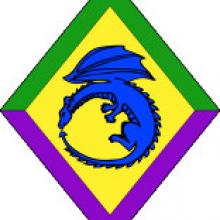Skald. This is the first word I think of when ruminating upon Viking Poetry. Most likely because skald in Old Norse means poet. (Page, 13). These poets were considered professionals and performed for great leaders and kings. (Page, 13). Unfortunately, our knowledge pertaining to the art of Viking poetry is steeped in mystery and supposition. This is owing to Viking poetry being “preserved in memory and performed orally, and was not formally recorded-” (Page, 12). What has been recorded comes from manuscripts written in the 1200s, some 200 years after their origin. (Page, 12).
The purpose of a skald was “as chroniclers and court poets whose principal task it was to sing the praise of the ruler and his deeds” (Hallberg, 107).
Viking poetry can be split into 2 main categories. One of these is Eddic poetry, which “relate religious myths and traditional ways of thinking, and tales of ancient heroes” (Page, 12). Eddic Poetry also has a “straightforward narrative, or dialogue...” (Page, 13). The other type of Viking poetry is Skaldic, which is “ferociously difficult in vocabulary, word order, sentence structure, allusion” (Page, 13). Skaldic poetry has the purpose “they can be referred to specific events in Viking history...They are the abstracts and brief chronicles of the time,” (Page, 13).
However dissimilar these two types of poetry, do have one common element. “To be sure, in both genres alliteration is an essential, fundamental prosodic principle,” (Hallberg, 12).
I had heard a story of 5 heavy fighters in the barony of Unser Hafen who performed quite well during a Northern Realms War. One story in particular stuck with me, not so much because it was relayed to me a number of times, but because it demonstrated how these fighters truly encapsulate what it means to be a part of this barony, to be a stonewolf.
What better method of immortalizing their actions than through skaldic poetry? My persona, along with my ancestry, are seeped in viking culture so it seemed abundantly appropriate. This meant I needed to get eye witness accounts of the events. I knew nothing of the SCA when these events transpired. Not only that, I am a fencer (other than my 3 week sojourn in heavy fighter when I initially joined the SCA) and know nothing about fighting as a heavy fighter, especially during war/ tournaments. Therefore, I went to all five individuals and asked for their version of those events. Next, I asked other heavy fighters for any and all details they could recall of that particular incident. I also inquired of other heavy fighters what it was like to fight in wars/ tournaments.
Skaldic poetry is a process which requires an inordinate amount of time concurrent with thorough investigation/applications of structure and form. Unfortunately, the rules pertaining to the rhythm and rhyme of skaldic poetry is excruciatingly exact. Further difficulty arises because a concept portrayed in Old Norse may be one or two words long whereas the English translation of such could be anywhere from one to eight or more words. Due to alliteration being a key element of skaldic poetry, I decided to employ it heavily in the construction of my poem. Thereby giving me a foundation and catalyst from which to build and refine my work.
I plan on learning the Norse language in order to better understand the structure of skaldic poetry. I also plan to delve deeper into the techniques the skalds would use, not just in the skaldic poetry but also their eddic poetry. Another next step will be to memorize my poetry so as to be as authentic in performance as I can be. I am in my infancy with bardic and I look forward to learning and growing in this art form.
Hallberg, Peter. Old Icelandic Poetry Eddic Lay and Skaldic Verse. University of Nebraska Press, 1962.
Page, R.I. Chronicles of the Vikings: Records, Memorials, and Myths. University of Toronto Press Incorporated, 1995.
Interviews with many heavy fighters within the SCA

